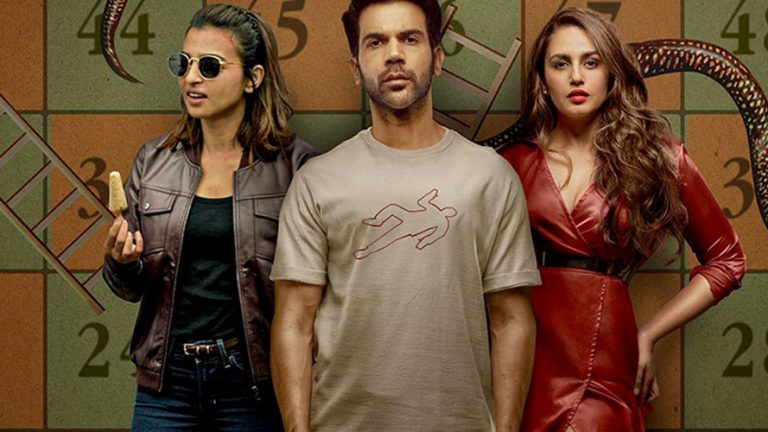The female characters in the film Monica, O My Darling defies the sexist vamps trope
The killings just won’t stop in the Netflix film Monica, O My Darling, which debuted last Friday and stars Rajkumar Rao, Radhika Apte, and Huma Qureshi as the two main female characters. You never know who is the brain behind it all, just like in a good noir movie. When you think you’ve got it figured out, a lightbulb goes out.
The 1989 Japanese novel Burutasu No Shinzou by Keigo Higashino, which was adapted into the film Monica, O My Darling, reinvents the new wave of Indian noir in cinema, as do the best noirs, a genre that first emerged in response to the Great Depression in America and features a heavy dose of detective chases in the dark, sex, and reckless crimes.
The hard-boiled wonderland that is Indian noir has lived up to its full potential, with unending chases, double-dealing cops, and a heady potpourri of sex, violence, and a showcase of vamps in Bollywood, from Sriram Raghavan’s Johnny Gaddar to Thiagarajan Kumararaja’s Aaranya Kaandam.
However, there has always been debate over how most noir movies approach their female characters with lots of discrimination against women. Or perhaps these characters have been interpreted in a fairly one-dimensional way. The female characters in Monica, O My Darling stand out because they are driven by their own goals rather than the men in their lives and will stop at nothing to get what they want.
The audience may look at these characters with a patriarchal gaze, as is common with such female characters in literature and movies, seeing them as doubtful women who will betray you, lack a moral compass, and have no empathy. A usual showcase of vamps of Bollywood again and again.
Huma Qureshi recently summarised this discrimination against women in an interview with Film Companion when she was questioned about her character Monica Machado in the context of a vamp. She said that Monica is not a vamp simply because she is more attractive and comes with the full package of beauty. The character defies the sexist vamp trope. We tend to view attractive women from the perspective of those who aren’t hesitant to utilize their sexuality to further their goals. Although men do similarly, we never feel the need to refer to them in such a negative manner.
This is a welcome change from previous actors who tried to rationalize their roles as “vamps,” ignoring the dubious roots of the term. In addition to ignoring the moral and intellectual agency of women, the notion of a femme fatale or vamp who will use seduction to obtain what she wants also assumes that it is somehow out of character for women to go to any lengths.
Back in the day, the female characters in Bollywood cinema have generally portrayed women in ways that conform to traditional stereotypes, such as mothers, lovers, and spouses, or as vamps, prostitutes, and cabaret dancers. Bollywood movies have taken advantage of the vamp’s persona. Describing them as cruel, alluring, or characterless The principal heroines in early Bollywood movies were typically portrayed as virtue-signaling, morally upright individuals, thus the sexualized imagery needed for the male gaze was satisfied by the vamp characters. Leading to the sexist vamp trope.
The female characters in the film Monica, O My Darling refuse to accept the constraints that the world would like to place on them. She is not a rash psychopath with no motivation to kill. She also acknowledges that she will go to any length to pay her “GST, excise, and house tax obligations.” If doing so requires exploiting her sexuality, letting loose during a corporate event, and utilizing cunning elderly guys who purposefully caused her to become pregnant as leverage, then so be it.
Who are we to pass judgment, Monica appears to be saying. What’s more, why do our moral and ethical standards so quickly rise when we see a woman pursuing her rights with no shame? In many ways, Monica, O My Darling satirizes the notion that a stunning woman wearing red lipstick is intended to kill you. Later, we learn that the underlying terror was unrelated to women who were ambitious in any way. The movie attempts to deviate from the standard sexist vamp trope differently.






Add comment